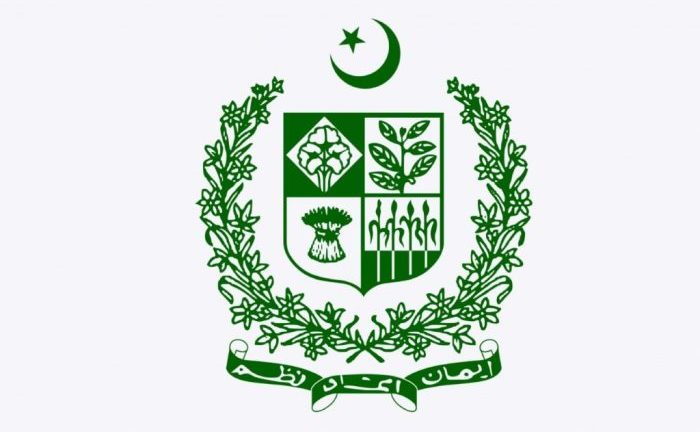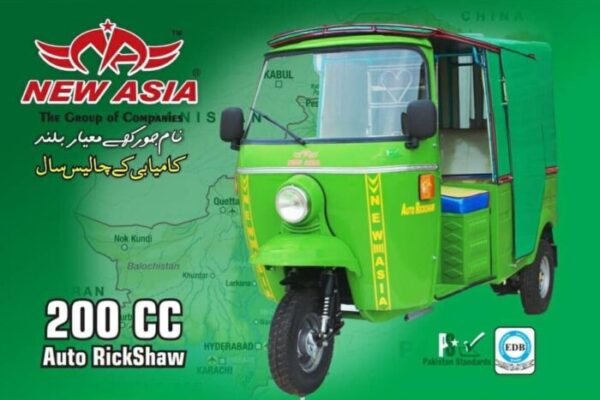State symbols hold a significant role in defining a country’s national identity and fostering a sense of unity among its people. Pakistan, like many other nations, has a set of distinctive national symbols that encapsulate its rich history, cherished traditions, and core values.
Selected based on their profound meanings and contributions to the nation, these symbols carry immense importance in representing Pakistan’s cultural heritage and collective aspirations. From the national flag that proudly waves to the national anthem that stirs patriotic emotions, each symbol holds a special place in the hearts of Pakistanis.
At Mobizilla, we have curated a collection of some of Pakistan’s most essential state symbols, offering insight into their historical significance and the stories behind their selection. Join us as we explore the profound meanings behind these cherished emblems, and discover how they shape the cohesive fabric of Pakistan’s national identity.
List of Important National Symbols of Pakistan
Nation’s Motto of Pakistan:
The official motto of Pakistan, inscribed in Urdu, is “Iman, Ittehad, Nazm,” which translates to “Faith, Unity, Discipline.” These guiding principles, envisioned by Muhammad Ali Jinnah, the founder of Pakistan, serve as the foundation for the nation’s progress and development.
Official Map of Pakistan:
The official map of Pakistan was prepared by Mahmood Alam Suhrawardy. This map accurately delineates the boundaries and geography of the country, serving as an essential tool for navigation, administration, and territorial representation.
National Symbol of Pakistan:
The star and crescent symbol is a national symbol of Pakistan. Historically associated with the Ottoman Empire in the 19th century, it gradually became linked with Islam in the realm of Orientalism. Today, it represents the cultural and religious heritage of the country.
National Calendar of Pakistan:
The national calendar of Pakistan is the Fasli calendar, derived from the Arabic term for division. Introduced by the Mughal emperor Akbar, it was initially used for land revenue and administrative purposes in northern India. The Fasli year spans 12 months from July to June.
National Reptile of Pakistan:
The mugger crocodile, also known as the Indian, Indus, Persian, Sindhu, or marsh crocodile, holds the distinction of being the national reptile of Pakistan. It inhabits various regions of the Indian subcontinent, including Pakistan, where it is celebrated for its significance in the ecosystem.
National Mammal of Pakistan:
The Indus River dolphin, a subspecies of freshwater river dolphin, is the national mammal of Pakistan. Found in the Indus River and its tributaries in India and Pakistan, this unique cetacean is known for its side-swimming behavior.
National Fish of Pakistan:
The golden mahseer, also called Tor putitora, Himalayan mahseer, or Putitor mahseer, holds the honor of being the national dish of Pakistan. This endangered species is found in rapid streams, riverine pools, and lakes in the Himalayan region and South Asia.
National Amphibian of Pakistan:
The Indian marbled toad, scientifically known as Bufo stomatitis, is the national amphibian of Pakistan. This species of toad is native to various Asian countries, including Pakistan, where it thrives in the Indus Valley and surrounding regions.
National Predators of Pakistan:
The snow leopard, a majestic large cat, serves as one of the national predators of Pakistan. Native to the mountain ranges of Central and South Asia, it is classified as an endangered species, symbolizing the importance of wildlife conservation efforts in the country.
National Dance of Pakistan:
The national dance of Pakistan is Kathak, one of the ten major forms of Indian classical dance. Kathak has deep historical roots and is traditionally attributed to the traveling bards known as Kathakars or storytellers from ancient northern India. This elegant dance form is characterized by intricate footwork, graceful movements, expressive hand gestures, and captivating storytelling.
National Instrument of Pakistan:
The national instrument of Pakistan is the daf, a large Persian frame drum used in both popular and classical music. Crafted from hardwood with metal ringlets attached, the daf features a goatskin membrane. This versatile percussion instrument is widely used across regions, including Arabia, Egypt, the Levant, Iraq, Azerbaijan, Iran, Armenia, Turkey, Pakistan, and Afghanistan.
National Dish of Pakistan:
Biryani is the national dish of Pakistan, an iconic South Asian mixed rice dish with origins among the Muslim communities of the Indian subcontinent. Biryani is a flavorful concoction of basmati rice, meat (usually chicken, beef, or mutton), aromatic spices, and saffron, creating a delightful medley of tastes and aromas.
National Icon of Pakistan:
The Teen Talwar (Three Swords) monument, situated in Clifton, Karachi, Sindh, holds the distinction of being the national icon of Pakistan. This monument features three marble swords inscribed with the creeds of Quaid-e-Azam Mohammad Ali Jinnah: Unity, Faith, and Discipline. It was commissioned by Zulfikar Ali Bhutto, former President and Prime Minister of Pakistan.
National Mountain of Pakistan:
K2, also known as Mount Godwin-Austen or Chhogori, is Pakistan’s national mountain and the second-highest peak in the world after Mount Everest. Soaring at an impressive 8,611 meters (28,251 feet) above sea level, K2 is located on the China-Pakistan border between Baltistan, in the Gilgit–Baltistan region of northern Pakistan. Its formidable ascent has earned it the moniker “Savage Mountain.”
National River of Pakistan:
The Indus River, one of the longest rivers in Asia, holds the honor of being Pakistan’s national river. Flowing southwards, the river stretches approximately 2,896 kilometers and originates from the western part of Tibet. The Indus River is of great historical and cultural significance to Pakistan, supporting the growth of civilizations and serving as a vital water source.
National Epic of Pakistan:
The national epic of Pakistan is the Hamza Nama or Dastan-e-Amir Hamza. It narrates the legendary exploits of Amir Hamza, an uncle of the Prophet Muhammad. While some stories are fantastical, the epic weaves a tapestry of romantic interludes, perilous adventures, narrow escapes, and acts of valor.
National Flag of Pakistan:
The national flag of Pakistan features a dark green field with a crescent and a star, along with a vertical white stripe. The green represents the majority Muslim population, while the white stripe symbolizes the minorities in the country. Designed by Syed Amir ud Din Kidwai based on the flag of the All India Muslim League, it was approved by the Constituent Assembly on August 11, 1947.
National Emblem/Logo of Pakistan:
The national emblem of Pakistan was adopted in 1954 and features a green color. At the top, a crescent and star symbolize the nation’s Islamic identity. Below, the Urdu version of Quaid’s motto, “Faith, Unity, and Discipline” (ایمان’ اتحاد’ تنظیم), is inscribed. In the center, a shield showcases four major crops of that time, namely cotton, wheat, tea, and jute, symbolizing the importance of agriculture. The shield is surrounded by beautiful floral designs, representing the country’s natural beauty and prosperity.
National Anthem of Pakistan:
“Pak Sarzameen Shad Baad” is the national anthem of Pakistan. Initially composed by Ahmed Ghulam Ali Chagla without lyrics, the anthem later received its lyrics penned by Abu Al Asar Hafeez Jullandhri. Unique in its creation, the anthem’s music preceded its lyrics. It was first broadcast on Radio Pakistan on August 13, 1954, and formally announced by the government on August 16, 1954, accompanied by a performance by 11 singers, including Ahmed Rushdi.
National Language of Pakistan:
Urdu is the national language of Pakistan, while English serves as the official language. Additionally, various regional languages, such as Punjabi, Sindhi, Pashto, Balochi, and Seraiki, are also spoken across the country.
Great Leader/Father of the Pakistani Nation:
Quaid-e-Azam Muhammad Ali Jinnah, the founder of Pakistan, is regarded as the father of the nation. Known by titles such as Baba e Qaum and Quaid-e-Azam, he was a lawyer by profession and served the All India Muslim League from 1913 until Pakistan’s independence on August 14, 1947. He became the country’s first Governor-General. Quaid-e-Azam passed away on September 11, 1948, at the age of 71.
Mother of the Pakistani Nation:
Fatima Jinnah, the younger sister of Quaid-e-Azam Muhammad Ali Jinnah, is considered the mother of the Pakistani nation and is known as Madr-i-Millat. A dental surgeon by profession, she actively participated in the independence movement alongside her brother. After independence, she engaged in Pakistani politics. Fatima Jinnah passed away on July 9, 1967, at the age of 73.
National Poet of Pakistan:
Allama Muhammad Iqbal, a great poet, philosopher, scholar, and leader of the Pakistan Movement, is the national poet of Pakistan. Proficient in Urdu and Persian, he was born in Sialkot. He played a significant role in advocating the idea of Pakistan and is affectionately known as Musawar-e-Pakistan.
National Masjid of Pakistan:
Faisal Masjid in Islamabad is the national masjid of Pakistan. It stands as the largest masjid in the country and was designed by Turkish Architect Vedat Dalokay in the shape of a desert tent. Named after the late King of Saudi Arabia, Shah Faisal bin Abdul Aziz, the masjid was completed in 1986. It features four minarets of 90 meters in height and has a covered area of 5,000 square meters, with a capacity of 74,000 persons in the main areas and an additional 200,000 persons in adjoining grounds.
National Monuments of Pakistan:
Pakistan Monument in Islamabad and Bab-e-Pakistan in Lahore are two national monuments of Pakistan. The Pakistan Monument in Islamabad was completed in 2007 and represents the four provinces and three territories of the country. Situated on Shakar Parian Hills, it symbolizes national unity and harmony. Bab-e-Pakistan, also known as Gateway to Pakistan, is located on the site of a major refugee camp during the time of independence.
National Library of Pakistan:
The National Library of Pakistan, located at Constitution Avenue, Islamabad, was inaugurated in 1993. Serving as a cultural center and a working place for scholars and students, the library plays a vital role in promoting education and preserving the country’s literary heritage.
National Mausoleum of Pakistan:
Mazar-e-Quaid, located in Karachi, is regarded as the national mausoleum of Pakistan. It houses the tomb of Quaid-e-Azam Muhammad Ali Jinnah, the founding father of the nation.
National Dress of Pakistan:
Shalwar Kameez is the national dress of Pakistan, and it has variations for both men and women.
National Sports of Pakistan: Field Hockey (simply known as Hockey) is the national sport of Pakistan, though Cricket holds the title of the most popular sport in the country. Additionally, sports such as Squash, Badminton, Boxing, Volleyball, and Kabaddi are also played in Pakistan.
National Animal of Pakistan:
Markhor is the national animal of Pakistan, typically found in mountainous regions. It is a majestic creature with a height ranging from 26 to 45 inches and a weight of about 40 to 100 kg. Markhor’s color is primarily tan, sometimes with white and black shades. It is known for its corkscrew-shaped horns, which can be up to 65 inches long in males and up to 10 inches in females.
National Bird of Pakistan:
Chukar is the national bird of Pakistan. It is a beautiful bird with a light brown back, grey chest, and buff belly. Its face is white with a black border, and its sound is pleasing to the ears.
National Flower of Pakistan:
Jasmine or Gardenia is the national flower of Pakistan. It belongs to the coffee family of plants and includes about 250 species of flowering plants.
National Tree of Pakistan:
Deodar or Cedrus Deodara is the national tree of Pakistan. This majestic tree can reach heights of about 40 to 60 meters with a trunk diameter of up to 3 meters.
National Drink of Pakistan:
Sugarcane Juice, known as “Roh” in Pakistan, is the national drink (beverage) of the country. In the summer season, it is common to find vendors selling fresh sugarcane juice.
National Fruit of Pakistan (Summer):
Mango is the national fruit of Pakistan for the summer season. Indigenous to the subcontinent, there are various kinds and varieties of mangoes in the country.
National Fruit of Pakistan (Winter):
Guava is the national fruit of Pakistan for the winter season.
National Religion:
Islam is the national religion of Pakistan. It is a monotheistic faith that professes the belief in one incomparable God (Allah) and acknowledges Muhammad (PBUH) as the last messenger of God. Islam is the world’s second-largest religion, with over 1.7 billion followers, or 23% of the global population, known as Muslims.
National Tower:
Minar-e-Pakistan, a public monument located in Iqbal Park, Lahore, Punjab, is the national tower of Pakistan. It was constructed in the 1960s at the site where, on March 23, 1940, the All-India Muslim League passed the Lahore Resolution during British colonial rule over British India.
State Bird of Pakistan:
The State Bird of Pakistan is the Peregrine Falcon. Known for its impressive speed, the peregrine falcon is a widespread bird of prey in the family Falconidae. With its blue-grey back, barred white underparts, and black head, it is a large crow-sized falcon. During its characteristic hunting stoop (high speed dive), the peregrine falcon can reach speeds of over 320 km/h (200 mph), making it the fastest member of the animal kingdom.
National Vegetable:
The National Vegetable of Pakistan is Lady Finger, also known as Okra. This flowering plant belongs to the mallow family and is valued for its edible green seed pods. The exact geographical origin of okra is a matter of debate, with suggestions of West African, Ethiopian, and South Asian origins. It is cultivated in tropical, subtropical, and warm temperate regions worldwide.
National Colours:
The National Colours of Pakistan are Green & White. Green is situated between blue and yellow on the spectrum of visible light and is evoked by light with a predominant wavelength of roughly 495–570 nm. White, on the other hand, is an achromatic color, meaning it is a color without a hue.
National Airline:
The National Airline of Pakistan is PIA (Pakistan International Airlines). It is the national flag carrier and operates mainly from its hub in Karachi, with secondary hubs in Lahore and Islamabad. PIA was nationalized on January 10, 1955, and was renamed Pakistan International Airlines. The airline’s first international flight was to London, via Cairo and Rome, in 1955.
National Day:
Pakistan Day celebrated on 23rd March, is the National Day of Pakistan. It commemorates the Lahore Resolution passed on March 23 each year. Although the word “Pakistan” was not explicitly used in the resolution, it is considered a significant milestone in the Muslim struggle for an independent state in undivided India.
National Document:
The National Document of Pakistan is the Lahore Resolution, also known as the Pakistan Resolution. Drafted between 22nd to 24th March 1940, by the 25-member Working Committee of the All-India Muslim League, this political resolution sought greater Muslim autonomy within British India. Later, it was interpreted as a call for a separate Muslim state, which ultimately led to the creation of Pakistan. The resolution was presented at Minto Park in Lahore on 23rd March 1940, by Maulvi A.K. Fazlul Huq.





